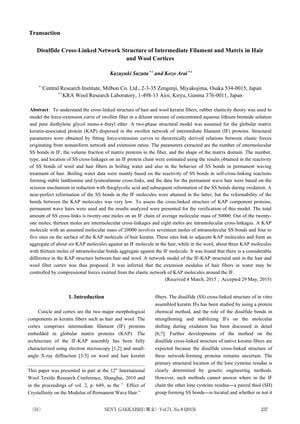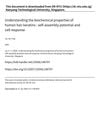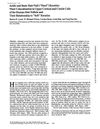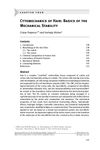Disulfide Cross-Linked Network Structure of Intermediate Filament and Matrix in Hair and Wool Cortices
January 2015
in “
Sen'i Gakkaishi
”

TLDR Hair and wool strength is affected by the number and type of bonds in their protein structures, with hair having more protein aggregates than wool.
The study used rubber elasticity theory to model the structure of hair and wool keratin fibers, focusing on the cross-linked network of intermediate filament (IF) proteins and keratin-associated protein (KAP) matrix. By fitting force-extension curves to theoretical models, the researchers determined structural parameters such as the number of intermolecular disulfide (SS) bonds in IF, the volume fraction of matrix proteins, and the shape of the matrix domain. They found that an IF protein chain has 21 moles of SS cross-links, with 13 moles being intermolecular and 8 moles intramolecular. A KAP molecule was estimated to have 17 moles of intramolecular SS bonds and 4 to 5 sites for intermolecular linking, forming aggregates around the IF. The study revealed significant differences between hair and wool KAP structures, with hair having aggregates of about six KAP molecules per IF molecule, while wool had about three. The results suggest that the extension modulus of hair fibers in water is influenced by the compressional forces from the elastic network of KAP molecules surrounding the IF.



